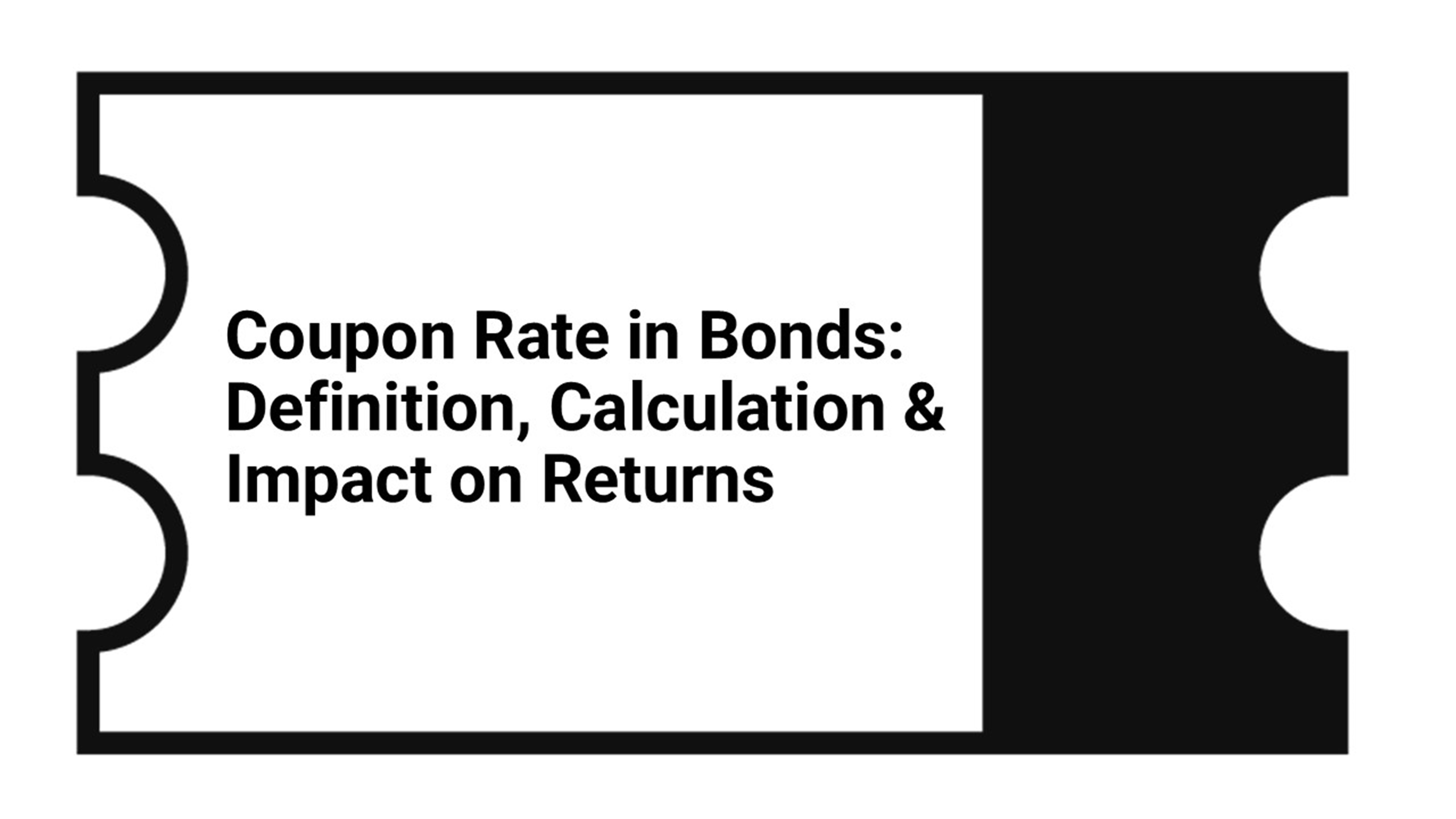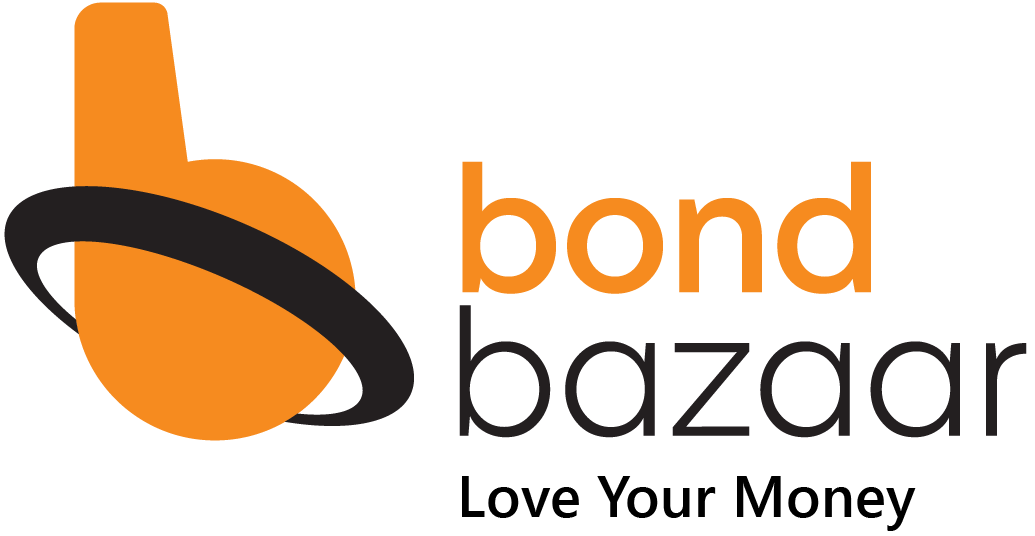Coupon Rate in Bonds: Definition, Calculation & Impact on Returns

When a company or government needs to raise funds, it often issues bonds to investors. Consider a business looking to expand its manufacturing facility and needing capital. Instead of borrowing from a bank, it decides to issue bonds that investors can buy. Each bond has a fixed maturity date, which is the date by which the company promises to repay the original amount, known as the face value or par value. Along the way, the company pays regular interest to bondholders. This interest rate is referred to as the coupon rate.
But what exactly is a coupon rate? How does it affect the money you make from bonds? Why should you care about this term when you want to invest? Let’s explore the coupon rate meaning and coupon rate definition, how the fixed interest payments work, and why market changes can impact your bond investment. We’ll also touch on related concepts like Yield to Maturity (YTM) and Yield to Call, and explain how different types of bonds play a role in this.
What is Coupon Rate and How is it Calculated?
The coupon rate is the annual interest percentage that bond issuers promise to pay based on the bond’s face value. For example, if a company issues a bond with a face value of ₹1,000 and an 8% coupon rate, it means the company will pay ₹80 every year to the bondholder until the maturity date. The term “coupon” originates from the old practice of attaching physical coupons to bonds, representing each interest payment due. Investors would detach and redeem these coupons to receive their interest.
The coupon rate can be calculated easily using this formula:
Coupon Rate=(Annual Coupon Payment/Face Value)×100
For instance, if you receive ₹120 annually on a bond with a face value of ₹1,500, the coupon rate would be:
(120/1500)x100 = 8%
This rate is fixed when the bond is issued and typically remains unchanged throughout the bond’s life.
Why is the Coupon Rate Important?
The coupon rate is what determines your predictable income from the bond. Think of it as the fixed salary a bondholder earns, regardless of how the market performs. For businesses and governments issuing bonds, the coupon rate helps attract investors by offering a competitive fixed income that reflects general interest rate conditions at the time of issuance.
How Coupon Rate Affects Your Bond Investment?
At first glance, choosing a bond with a higher coupon rate seems obvious; it promises more income every year. However, there's more to the story because bonds trade in a market where interest rates fluctuate on a daily basis.
Imagine you bought a corporate bond with a coupon rate of 7%, issued at a face value of ₹1,000, which pays ₹70 annually. If market interest rates rise to 9%, new bonds become more attractive to investors. Your bond’s fixed 7% payments now seem less appealing, so its market price falls to compensate. If you sell your bond before maturity, you might get less than ₹1,000.
Conversely, if market rates drop to 5%, your bond’s higher 7% payments make it more desirable, so its price may rise above the face value. This relationship means the market price of a bond moves inversely with changes in interest rates, even though your coupon payments remain fixed.
Coupon Rate vs. Yield to Maturity (YTM)
This brings us to an important related concept: Yield to Maturity (YTM). While the coupon rate is fixed, the YTM reflects the actual return an investor earns if the bond is held until maturity, considering the current market price.
Suppose you purchase the earlier example bond (original coupon 7%) but at a discounted price of ₹950 due to rising market rates. The ₹70 interest payments now represent a higher effective yield relative to your ₹950 investment. The YTM accounts for this and will be higher than the coupon rate, showing your true earning potential.
Similarly, if the bond’s price is above ₹1,000, the YTM will be lower than the coupon rate.
Yield to Call works in a similar way but applies if the bond can be redeemed early by the issuer.
Different Types of Bonds and Their Coupon Rates
Coupon rates vary based on the types of bond:
- Government Bonds (G-sec): Usually offer lower coupon rates but near risk-free returns due to government backing.
- Corporate Bonds: Tend to offer higher coupon rates to compensate for the credit risk of the issuing company.
- Tax-Free Bonds: Issued by government-backed entities, they offer moderate coupon rates but provide interest income free of tax, making them an attractive option for high-income investors.
For instance, Bondbazaar provides access to over 10,000 bonds spanning government securities, corporate bonds, and tax-free bonds, allowing investors to choose bonds with coupon rates that suit their risk preference and income goals.
Why Understanding Coupon Rate Matters For Investors?
Evaluating a bond investment requires going beyond just the coupon rate:
- Income Planning: The coupon rate defines the steady cash flow you can expect to receive.
- Market Sensitivity: Recognising that coupon rates are fixed helps you understand why bond prices fluctuate in response to changes in interest rates.
- Comparing Bonds: Higher coupon rates mean better income but may also indicate higher risk.
- Trading Decisions: When buying or selling bonds on Bondbazaar, knowing the coupon rate helps you assess whether a bond’s current price offers a good yield-to-maturity (YTM) relative to its risk.
Conclusion
Understanding the coupon rate and its impact on your bond investment is crucial for achieving a predictable income and managing risk effectively. Bonds offer a compelling way to diversify your portfolio with steady returns, but choosing the right bond, whether government, corporate, or tax-free, depends on factors such as the coupon rate, yield to maturity, and market conditions.
For retail investors seeking a seamless, transparent, and cost-effective way to invest in bonds, Bondbazaar offers a powerful solution. With access to over 10,000 bonds across categories, real-time trading on NSE and BSE, zero brokerage, and expert guidance, Bondbazaar empowers you to make informed decisions and manage your fixed income investments with confidence.
Start your bond investing journey with Bondbazaar today, and enjoy the convenience and control of modern bond trading at your fingertips.
Frequently Asked Questions (FAQs)
Q. What is the difference between coupon rate and YTM?
Coupon rate is the fixed interest percentage on face value; YTM considers the market price and total return if held till maturity.
Q. Can a bond’s coupon rate change after issuance?
No, it's fixed. However, the bond's price and YTM can change in the secondary market.
Q. Where can I invest in bonds with high coupon rates in India?
You can explore over 10,000 bonds on Bondbazaar, including high-yield corporate and tax-free bonds.
Q. Does a higher coupon rate mean higher returns?
Not always. Higher coupon bonds may carry more credit or interest rate risk. Always consider YTM and credit rating too.
